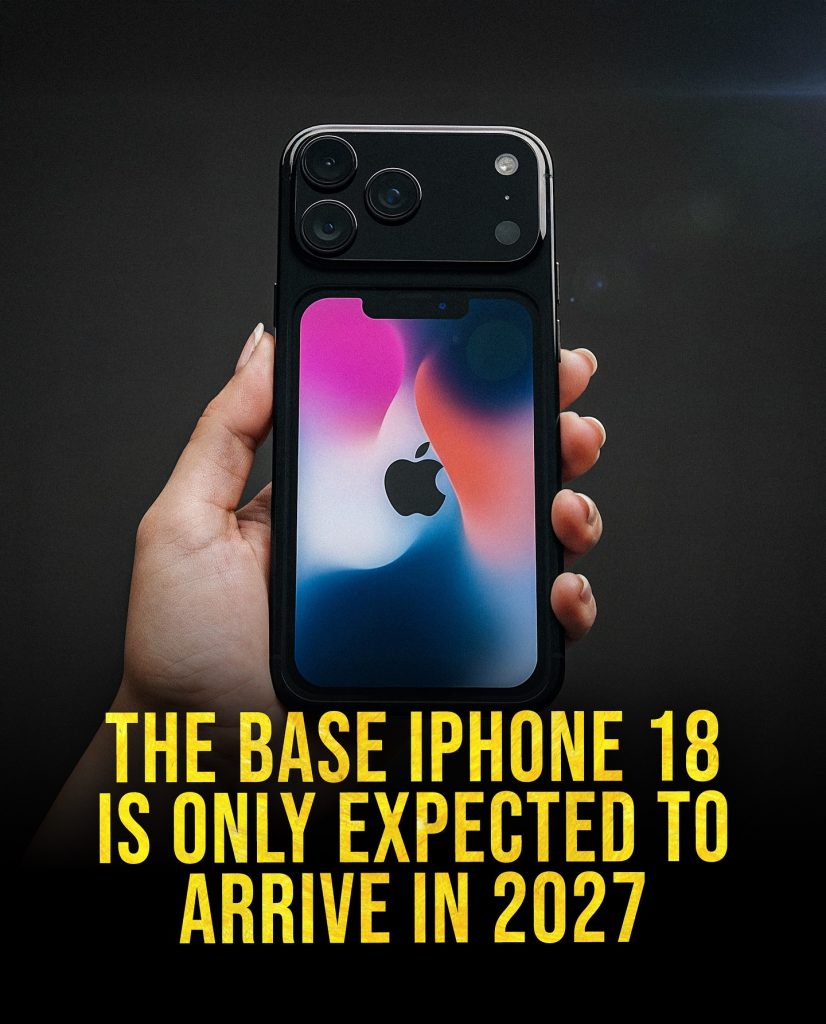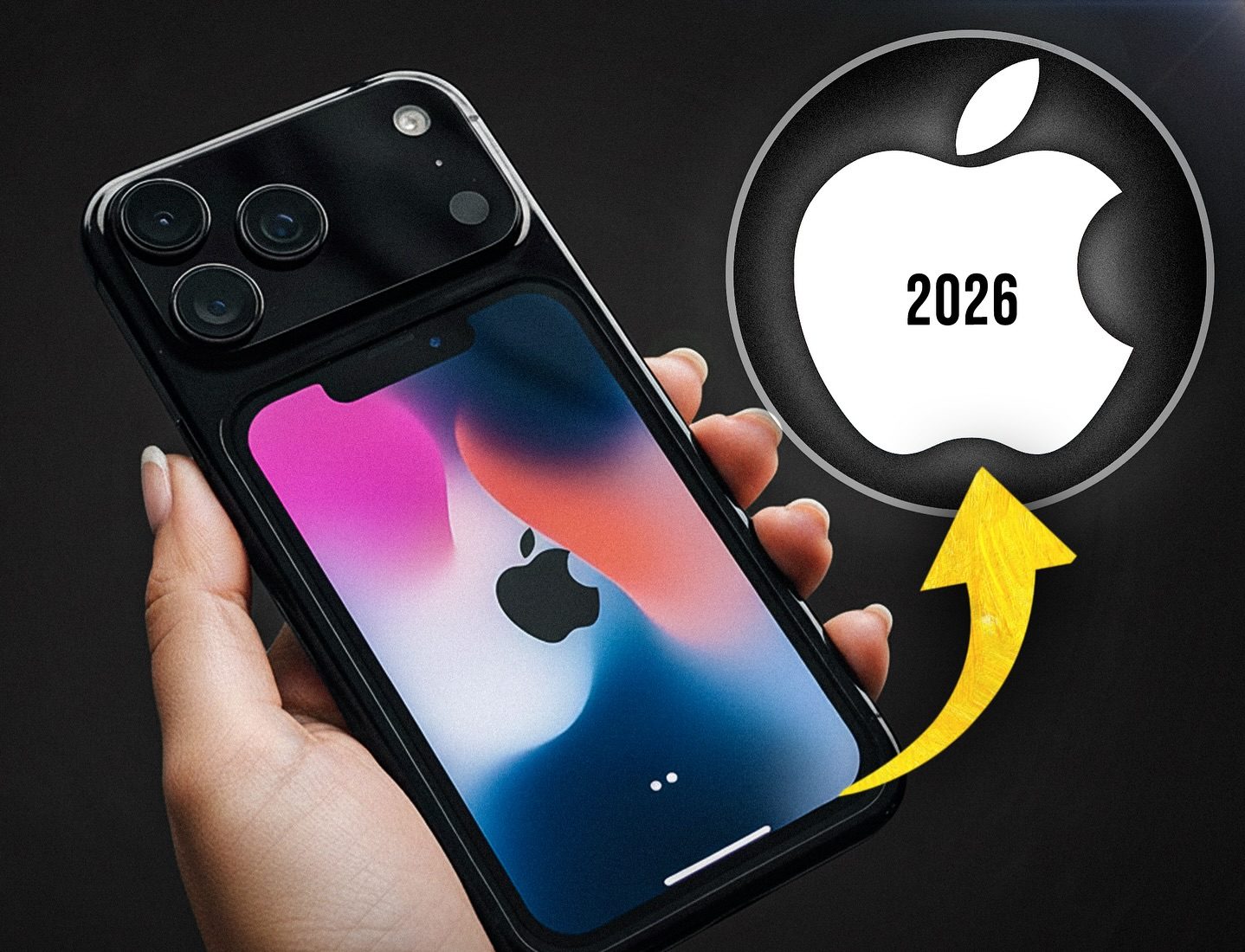Apple Reportedly Delaying the Base iPhone 18 Until 2027 — Focusing Only on Pro Models and Its First Foldable Device in 2026 🚀
If you were hoping to upgrade to the standard iPhone 18 in 2026, you might have to wait a little longer. According to new reports from sources across Apple’s Asian supply chain, the Cupertino tech giant is planning a major shake-up in its release schedule — one that could mark the first time in history the company skips launching a “base” iPhone model.
The news, first reported by ETNews and later picked up by MacRumors and PhoneArena, suggests Apple will release only its premium iPhone 18 models in 2026 — including the iPhone 18 Pro, iPhone 18 Pro Max, and potentially the long-rumored iPhone Fold. The standard iPhone 18, which typically serves as the entry-level model in Apple’s annual lineup, is now expected to launch in early 2027, creating a one-year gap between base and Pro model releases.
For Apple fans, this is unprecedented. Since the debut of the first iPhone in 2007, the company has launched a new “base” model every single year, without exception. Even during the pandemic supply shortages of 2020, when production lines faced global delays, Apple still delivered a complete lineup. But 2026 might change that streak.
Why Would Apple Delay the Standard iPhone 18?

Industry insiders believe Apple’s reasoning comes down to strategy — and timing. For years, the company’s profit margins have leaned heavily on its Pro and Pro Max models, which boast higher prices and features that attract enthusiasts and professionals. The base models, while still top-quality devices, have increasingly served as “safe bets” for casual users, often recycling older designs or hardware to maintain affordability.
By skipping the standard model for a year, Apple could be doing two things at once:
First, it would give extra spotlight to the premium lineup. In 2026, the company is rumored to be unveiling its first foldable iPhone, a device that will likely command significant attention — and a massive price tag. By removing the distraction of a lower-cost model, Apple can make the launch all about innovation, luxury, and design evolution.
Second, the delay could allow Apple more development time for its base iPhone. Some analysts suggest Apple is preparing a new “entry-tier” design language or feature set that would require reengineering — possibly incorporating some form of under-display Face ID or an advanced A19 chipset adapted from the Pro line.
In short, skipping 2026 could give Apple’s engineers breathing room to create a more competitive base model — one that bridges the widening gap between affordability and performance.
The Foldable Factor

Perhaps the most exciting part of Apple’s 2026 plans is the rumored debut of a foldable iPhone. Multiple reports from Tom’s Guide, Barron’s, and The Verge indicate Apple has been testing several foldable prototypes internally since at least 2022.
The foldable iPhone is expected to feature a hybrid design — something between a traditional iPhone and an iPad Mini. Analysts believe the device could feature a 7.6-inch flexible OLED display, similar to Samsung’s Galaxy Z Fold series, but with Apple’s signature durability, polish, and integration with iOS.
By focusing on premium launches like the iPhone 18 Pro, Pro Max, and Fold, Apple could be positioning 2026 as a “flagship-only” year — an era-defining moment that shifts consumer perception of what the iPhone represents.
However, this bold move also carries risk. Foldable phones, while innovative, are still a niche market. Apple would be relying heavily on Pro-level sales to sustain momentum through 2026. But if history is any guide, the company knows how to make premium devices feel worth every penny.
A Shift in Apple’s Launch Strategy
If these reports hold true, Apple’s future product roadmap could begin following a split-release strategy:
- Fall 2026: iPhone 18 Pro, iPhone 18 Pro Max, iPhone Fold
- Spring 2027: iPhone 18 and iPhone 18e (a possible new affordable model)
This schedule would stagger product hype and create two major marketing waves each year — one for enthusiasts and another for mainstream users. It could also smooth out Apple’s production challenges, avoiding the heavy autumn supply crunch that often leads to long wait times for new iPhones.
The rumor aligns with Apple’s growing pattern of diversification. In recent years, the company has spread out its hardware launches across the calendar — from spring iPads and summer MacBooks to fall iPhones and winter accessories. Staggering the iPhone release might be the next logical step.
How the Market Could React
While Apple hasn’t officially confirmed any of these reports, analysts are already debating what this could mean for consumers and competitors.
If Apple delays the base iPhone 18, the iPhone 17 and iPhone 17 Plus could remain Apple’s primary non-Pro models throughout 2026. This might make them some of the longest-selling base models in the company’s history, potentially benefiting consumers looking for stability or lower prices.
Competitors, on the other hand, could use the opportunity to close the gap. Samsung, Google, and OnePlus are expected to push aggressively into the midrange smartphone space in 2026 — particularly with foldables and AI-driven features. But Apple’s unmatched ecosystem, combined with its reputation for long-term support, will likely keep its loyal users from switching.
The Pro lineup’s dominance also means Apple won’t be hurting financially. According to market data, the iPhone 15 Pro and Pro Max accounted for nearly 70% of Apple’s smartphone revenue in 2024 — a record high. That trend could grow even stronger if Apple effectively shifts more buyers toward its higher-margin models.
The Wait for 2027

For everyday consumers, the biggest question remains: should you wait for the standard iPhone 18 in 2027, or upgrade sooner?
If Apple indeed skips the base model next year, the iPhone 17 series (2025) may remain the most practical upgrade path for non-Pro users. The delayed iPhone 18 could come with major design and hardware upgrades, possibly incorporating new display technologies, next-gen chips, and even improved camera modules borrowed from the Pro lineup.
But with Apple, patience often pays off. Historically, major overhauls like the iPhone X (2017) or the iPhone 12 (2020) came after long development cycles — and both reshaped the smartphone market. The same could happen again in 2027.
The Bottom Line
Apple skipping the base iPhone 18 in 2026 would be a milestone moment — not just for the company, but for the smartphone industry as a whole. It signals a shift toward fewer, more focused releases and a stronger emphasis on the premium and foldable markets.
While nothing is officially confirmed, the idea fits Apple’s long-term trajectory: fewer products, more impact, and a steady push toward technological reinvention.
For now, the rumors leave fans with one certainty — 2026 is shaping up to be one of Apple’s boldest years yet. Whether you’re waiting for the iPhone 18, the foldable, or the next big leap in mobile innovation, the message is clear: change is coming, and Apple’s leading the charge once again.

